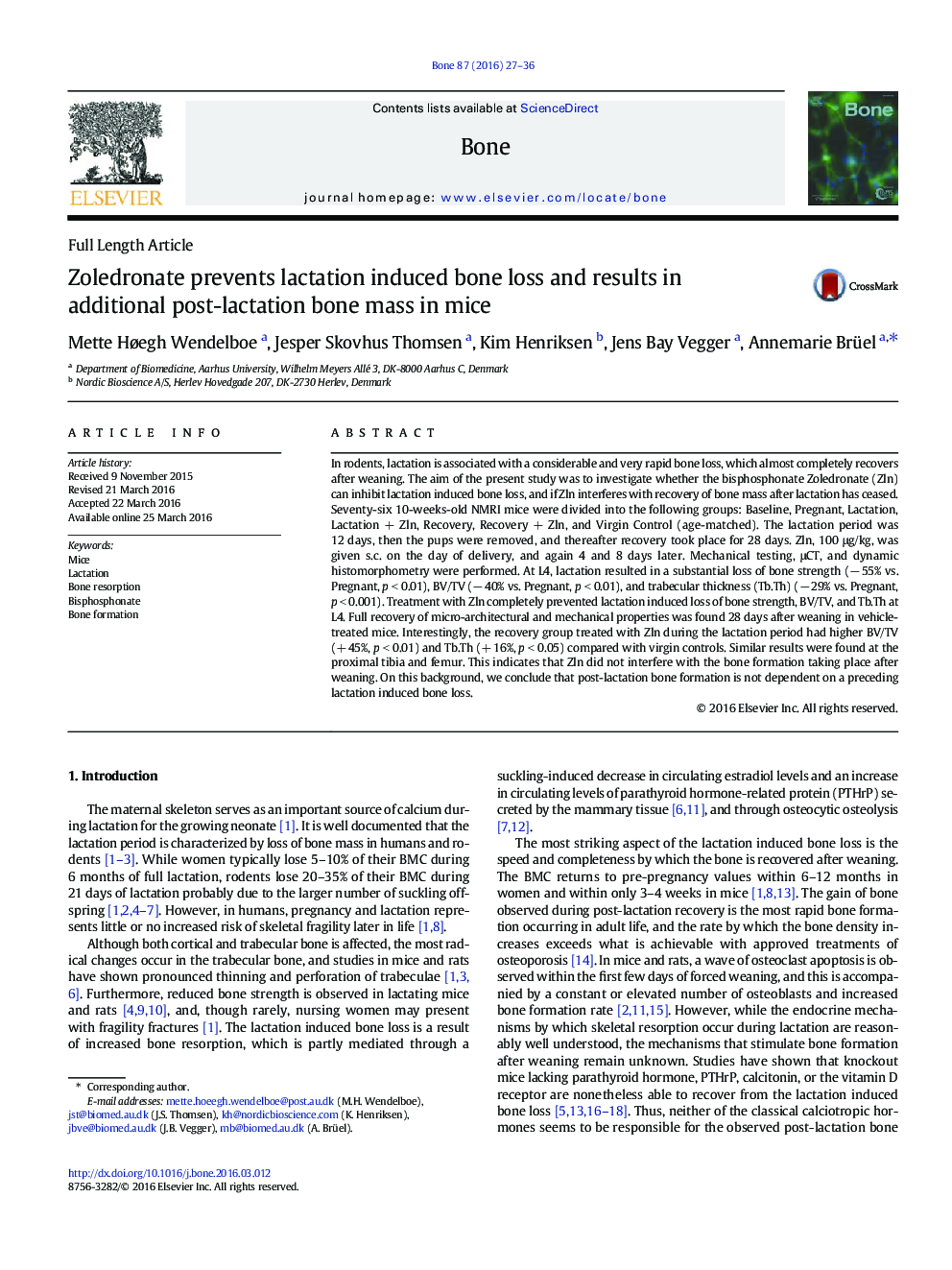| Article ID | Journal | Published Year | Pages | File Type |
|---|---|---|---|---|
| 5888886 | Bone | 2016 | 10 Pages |
Abstract
Seventy-six 10-weeks-old NMRI mice were divided into the following groups: Baseline, Pregnant, Lactation, Lactation + Zln, Recovery, Recovery + Zln, and Virgin Control (age-matched). The lactation period was 12 days, then the pups were removed, and thereafter recovery took place for 28 days. Zln, 100 μg/kg, was given s.c. on the day of delivery, and again 4 and 8 days later. Mechanical testing, μCT, and dynamic histomorphometry were performed. At L4, lactation resulted in a substantial loss of bone strength (â 55% vs. Pregnant, p < 0.01), BV/TV (â 40% vs. Pregnant, p < 0.01), and trabecular thickness (Tb.Th) (â 29% vs. Pregnant, p < 0.001). Treatment with Zln completely prevented lactation induced loss of bone strength, BV/TV, and Tb.Th at L4. Full recovery of micro-architectural and mechanical properties was found 28 days after weaning in vehicle-treated mice. Interestingly, the recovery group treated with Zln during the lactation period had higher BV/TV (+ 45%, p < 0.01) and Tb.Th (+ 16%, p < 0.05) compared with virgin controls. Similar results were found at the proximal tibia and femur. This indicates that Zln did not interfere with the bone formation taking place after weaning. On this background, we conclude that post-lactation bone formation is not dependent on a preceding lactation induced bone loss.
Related Topics
Life Sciences
Biochemistry, Genetics and Molecular Biology
Developmental Biology
Authors
Mette Høegh Wendelboe, Jesper Skovhus Thomsen, Kim Henriksen, Jens Bay Vegger, Annemarie Brüel,
